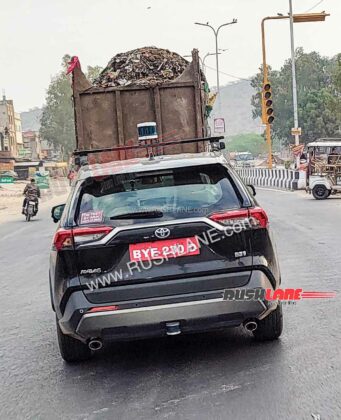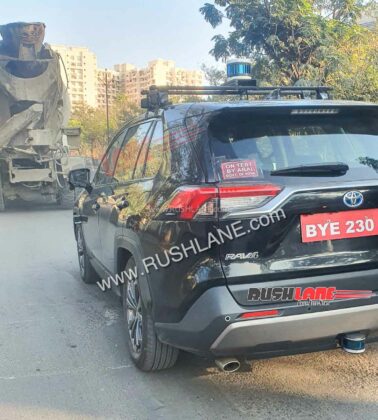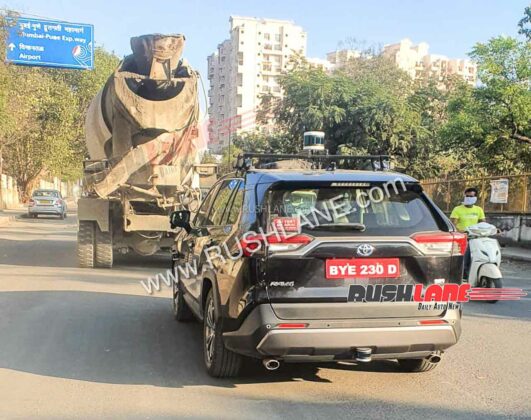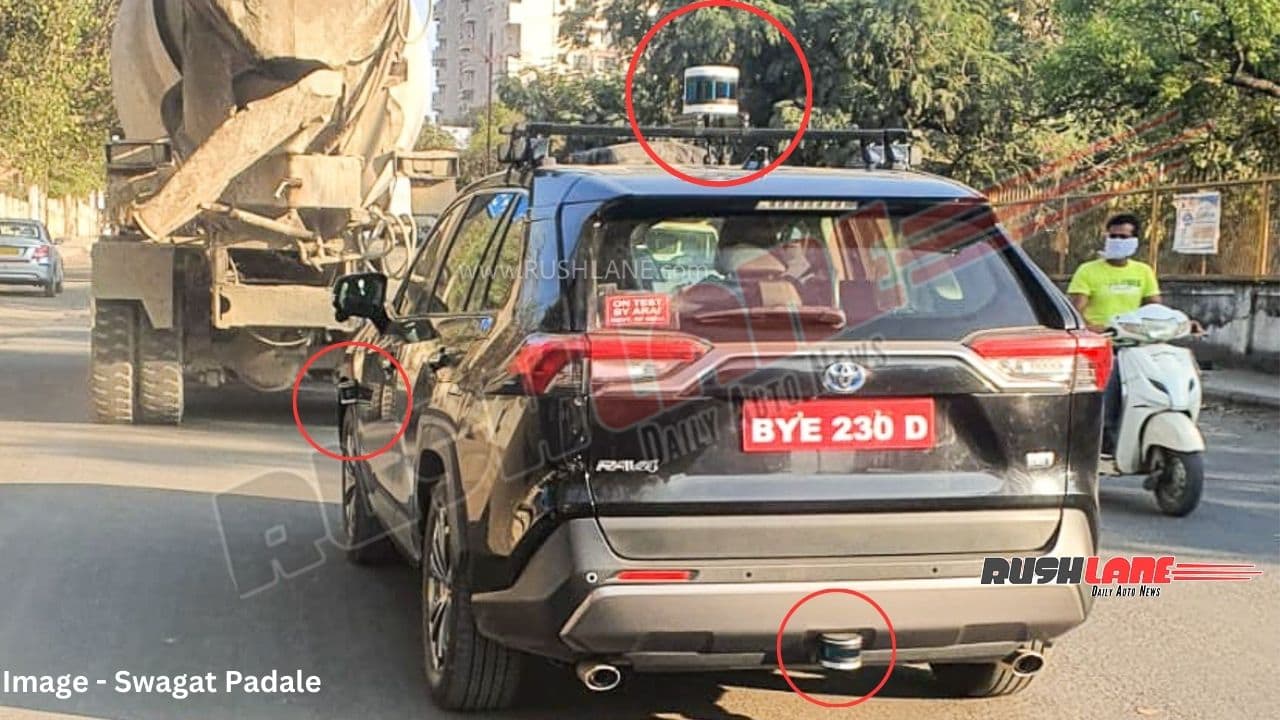
Upon observing the test prototype, it appears that Toyota and ARAI are exploring the possibilities of autonomous driving under Indian road conditions.
Recently, test models of the Toyota RAV4 were spotted navigating through Pune’s urban landscape, hinting at a shift in the evaluation approach for self-driving technology in the challenging Indian traffic environment. Toyota RAV4 has been a recurrent sight in India, with sightings dating back to 2020 and 2021, continuing into 2022. Fast forward to 2024, and the Toyota RAV4 is back in the spotlight. This time, the test mule is equipped with multiple LiDAR sensors.
ARAI Evaluates Self-Driving Capabilities for Indian Roads?
Count them, and you’ll find at least four sensors – one atop the roof in an aftermarket carrier, one at the rear bumper, one at the front left wheel well, and presumably another on the opposite wheel. Notably, the roof-mounted LiDAR sensor is the largest and seemingly the most potent of them all.

This uncovered RAV4 test mule featured no camouflage, and a conspicuous “ON TEST BY ARAI, GOVT OF INDIA” sticker adorned the rear windshield. It could well be a repurposed test mule from earlier sightings, now enlisted by ARAI in 2024 to evaluate the feasibility of self-driving scenarios on Indian roads.
LiDAR, short for Light Detection and Ranging, is a technology recognized by tech enthusiasts as Apple uses it for depth measurement on Pro models of iPhones and iPads. While the concept is similar, ARAI’s usage of professional-grade LiDARs in vehicles is primarily for real-time object detection and efficient distance measurement. LiDARs excel in tracking distant objects, complemented by the necessity of short-distance object tracking with radars, and imaging from multiple cameras.
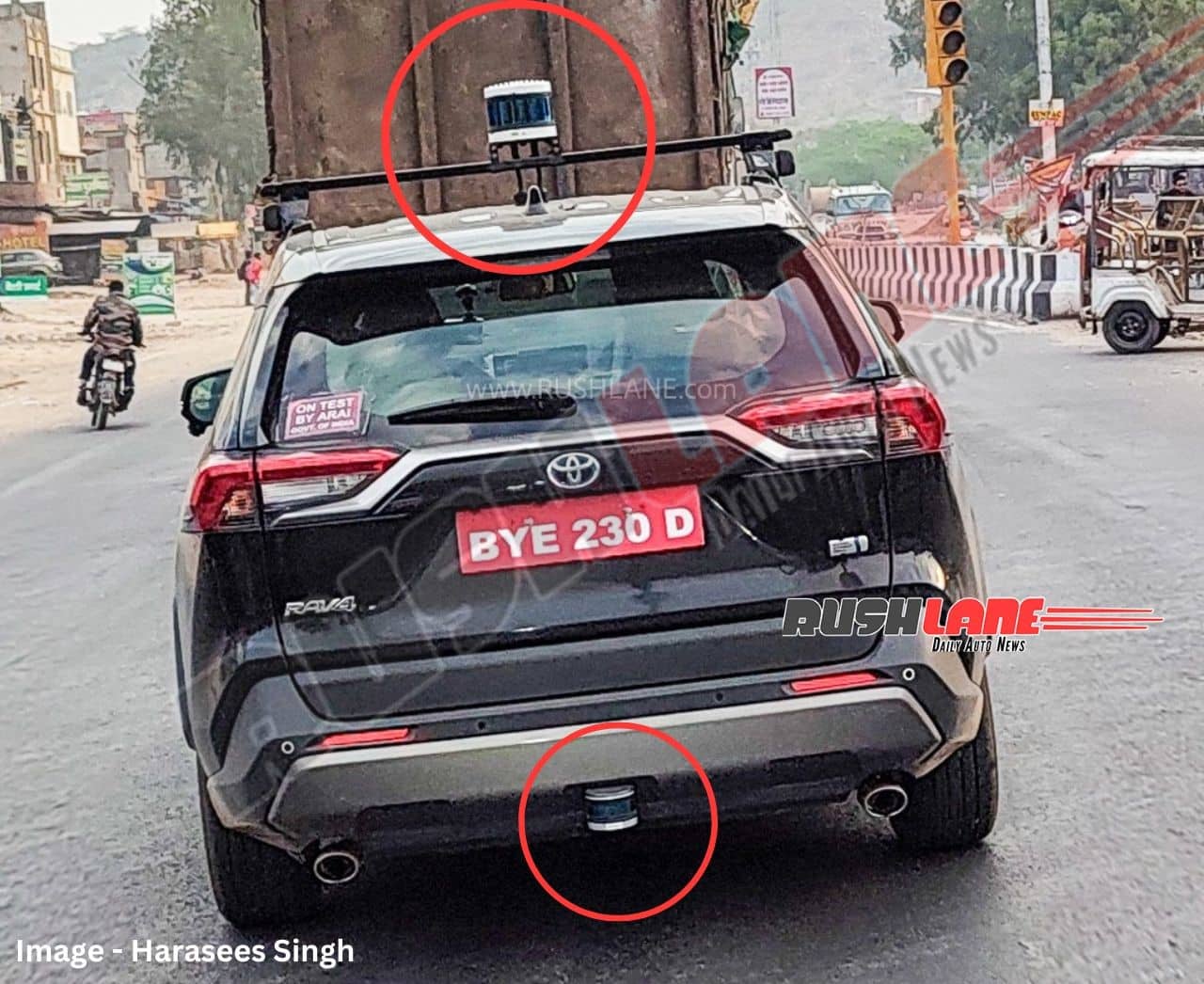
Understanding LiDAR and Its Purpose for ARAI
Despite Minister Nitin Gadkari expressing his stance on autonomous driving technology’s development for the Indian market, ARAI’s proactive testing raises curiosity. Speculatively, ARAI may be gathering raw data from Indian traffic conditions to calibrate or develop self-driving algorithms.
The real-time imaging of the surroundings, facilitated by LiDAR sensors, plays a crucial role in path planning, guiding the car’s trajectory, and avoiding obstacles. ARAI might be conducting research on behalf of a client interested in autonomous driving in Indian conditions.
Alternatively, this could be Toyota’s standard testing protocol, where they collect traffic behavioural data across global automotive markets and outsource similar operations to ARAI. Regardless, the outcome of this testing will be intriguing, especially considering Nitin Gadkari’s firm and well-grounded stance on autonomous driving in India.


